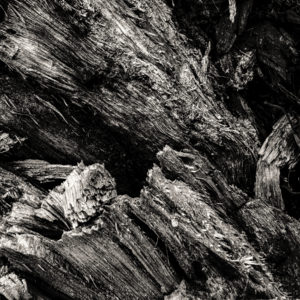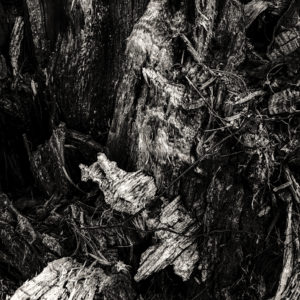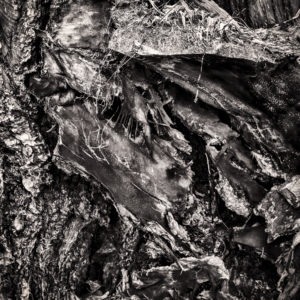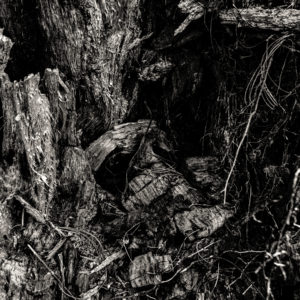 I usually do not crop my photos–or rather, I crop images in the viewfinder of my camera not in photo-editing software. However, a recent series of captures I made of the stump of a tree that had fallen in a violent storm, or due to the weight of snow or ice, or from a lightning strike yielded less interesting subject areas in the 2×3 dimensional ratio of my camera sensor as cracks and twisted wood fibers gave way to smoother or less varied surfaces or the ground about the wood.
I usually do not crop my photos–or rather, I crop images in the viewfinder of my camera not in photo-editing software. However, a recent series of captures I made of the stump of a tree that had fallen in a violent storm, or due to the weight of snow or ice, or from a lightning strike yielded less interesting subject areas in the 2×3 dimensional ratio of my camera sensor as cracks and twisted wood fibers gave way to smoother or less varied surfaces or the ground about the wood.
As a rule, I just don’t like to waste pixels from my original snap of the shutter. But, when the subject itself interests my eye only in a square or circular region as with these photographs, I edit as the image demands of me to use a square format for the finished results.
With most any rule for composition, convention, or preference I learn or choose to adopt, there come times, once I’ve gained some mastery with my process, when I find the subject calls for me to ignore rules and forge ahead however the picture demands.
Rules and guidelines are useful when learning something new. In my experience, they have forced me to go beyond my natural inclinations, or look at things in a different way–to create things I would not make without them. So I’ve found it useful to be an obedient student; and to move beyond convention once I’ve learned a few things and formed good habits.
Another recommended practice I have accepted for myself is to photograph a subject in multiple exposures. The shot I like in the field is not always one that makes the cut in the end. Another angle, another side, changing light conditions, may make for an image I like better when working in photo editing software like Photoshop and other apps.
I did that with these images; shooting eight or ten or twelve pictures; selecting these four working images in the end.
All this aside, I won’t hesitate to take one shot on the fly. You never know; it might be a successful venture. So, be happy to snap away anytime.


